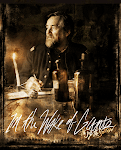 Excerpts with edits from Michigan War Studies Review, December 26, 2016
Excerpts with edits from Michigan War Studies Review, December 26, 2016In A Scientific Way of War, Ian Hope, a Canadian military officer, combat commander (Afghanistan), and teacher discusses the source and the influence of a particular mentality that emerged in the US Army in the nineteenth century.
Hope's masterful survey of the relevant French primary sources and their American interpreters is notable for his contention that the thought of Antoine-Henri Jomini did not shape the USMA curriculum as much a many have claimed. He admits that Gen. Henry Halleck, for a time Abraham Lincoln's General-in-Chief, was a strict Jominian, but downplays his influence on the Academy and Army compared to Dennis Hart Mahan's.
Hope argues that critics of antebellum theory are guilty of anachronism, ignoring the circumstances and policies the Academy and the theory were intended to support. He quotes Matthew Moten to the effect that historians have concluded that "When the profession needed men to concentrate on high-level problems of military policy and strategy, few were equal to the task."
Hope responds that:
What is meant by this is that America missed
the opportunity to create a Prussian-style general staff, a larger
standing army, elite military colleges, conscripted reserves, and
elaborate war plans for la grande guerre that could re-create
Cannae against any foe. The West Point academy is here judged against
the "high-level problems of military policy and strategy" of Europe, not
the United States. (142)
The author astutely explores the paradox that a small army in a relatively isolated, hence secure, nation, preoccupied with internal expansion, fortress construction, and constabulary operations against indigenes, nonetheless studied and planned intensively for a most unlikely continental war. He shows that this, on the face of it, counterintuitive focus paid off during the Mexican War (1846–46) and, ironically, after the Union descended into a long civil war.
Tracing "military science" to the Enlightenment and particularly French precedents explains much about the history of instruction at the USMA that historians often gloss over. Older Academy graduates like myself will appreciate Hope's meticulous explication of the "Thayer system," much of which survived into the 1960s.
Cadets had to master the basic principles and operations of all service branches, and graduates were regularly seconded to arms other than their own, notably the engineering corps and several bureaus. Hope's statistical analysis of the careers of West Point graduates shows that, at the outbreak of the Civil War, they already had considerable experience in higher administration and large-scale operations. The expertise of topographical engineers in operational planning is a case in point (136–38).
A Scientific Way of War will appeal to both professionals and lay persons with a serious interest in the US Army, its premier professional Academy, nineteenth-century American defense policy, the nature of a particular national approach to military theory and doctrine, and the professionalization of the American armed forces. Ian Hope makes the case for the importance of the study of the calculable part of war in pre-Civil War officer education and, implicitly, for its continued significance in professional education.
Full Text of Book Review is at Michigan War Studies Review, December 26, 2016


No comments:
Post a Comment